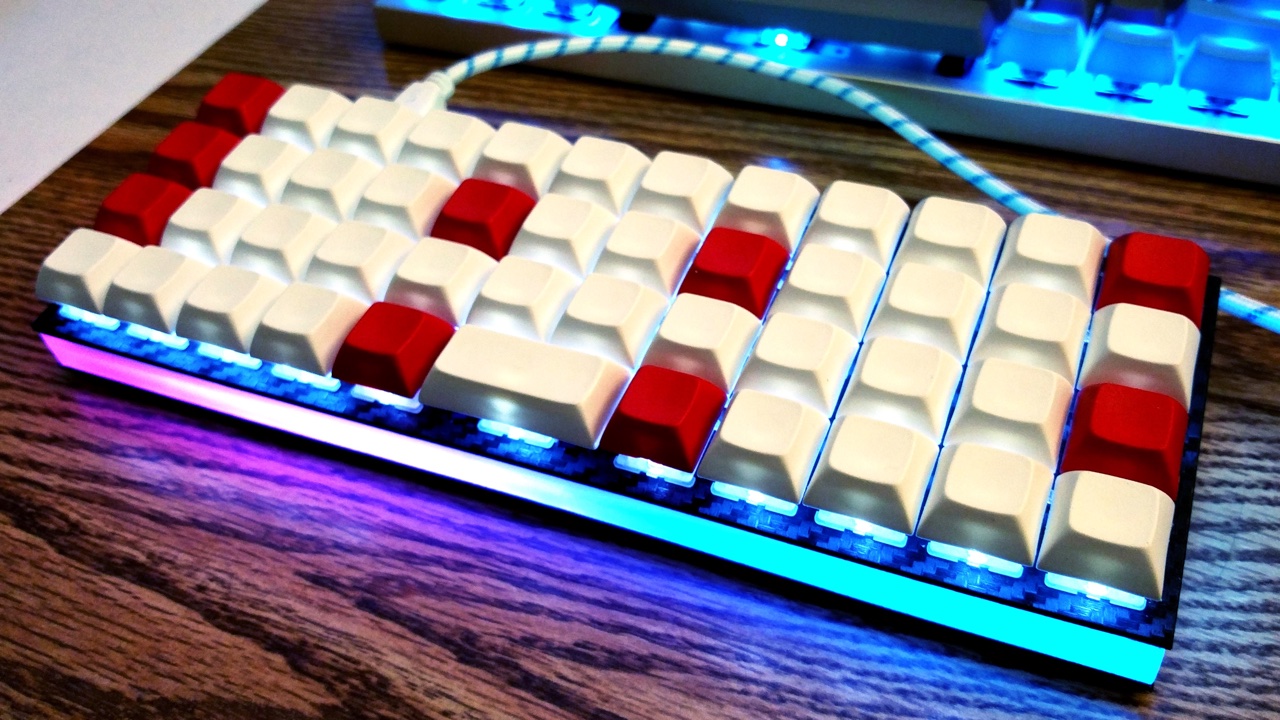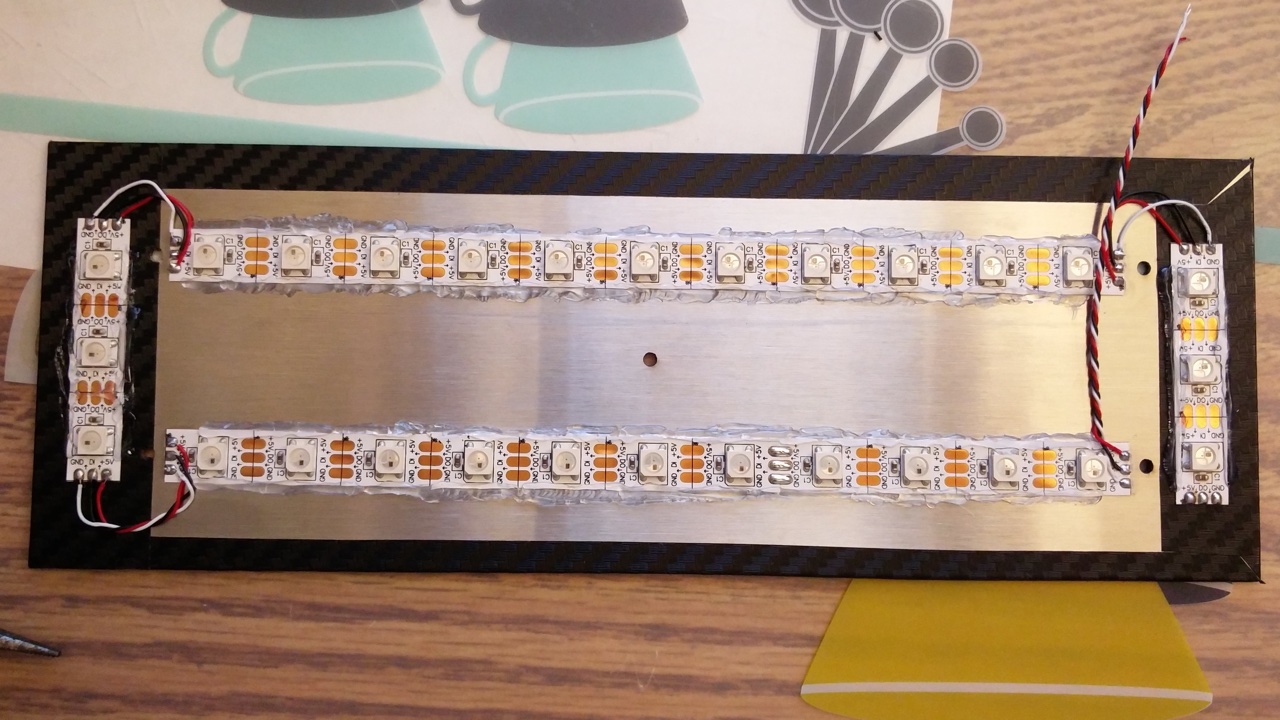diff options
| author | Yang Liu <i@yangliu.name> | 2016-01-24 18:12:19 -0800 |
|---|---|---|
| committer | Yang Liu <i@yangliu.name> | 2016-01-24 18:12:19 -0800 |
| commit | 6bc5e0cc314ad907023d2b91ef270a04b6395159 (patch) | |
| tree | 7844835cae6aa399386661907fbb860e38685d71 /README.md | |
| parent | 2d29795de81b6655735ee5b74a57deaaa4c63f1d (diff) | |
Update README
Diffstat (limited to 'README.md')
| -rw-r--r-- | README.md | 52 |
1 files changed, 41 insertions, 11 deletions
@@ -73,7 +73,7 @@ The following shortcuts automatically add `LSFT()` to keycodes to get commonly u KC_PIPE | KC_COLN : -`MT(mod, kc)` - is *mod* (modifier key - MOD_LCTL, MOD_LSFT) when held, and *kc* when tapped. In other words, you can have a key that sends Esc (or the letter O or whatever) when you tap it, but works as a Control key or a Shift key when you hold it down. +`MT(mod, kc)` - is *mod* (modifier key - MOD_LCTL, MOD_LSFT) when held, and *kc* when tapped. In other words, you can have a key that sends Esc (or the letter O or whatever) when you tap it, but works as a Control key or a Shift key when you hold it down. These are the values you can use for the `mod` in `MT()` (right-hand modifiers are not available): @@ -86,15 +86,15 @@ These can also be combined like `MOD_LCTL | MOD_LSFT` e.g. `MT(MOD_LCTL | MOD_LS We've added shortcuts to make common modifier/tap (mod-tap) mappings more compact: - * `CTL_T(kc)` - is LCTL when held and *kc* when tapped - * `SFT_T(kc)` - is LSFT when held and *kc* when tapped - * `ALT_T(kc)` - is LALT when held and *kc* when tapped - * `GUI_T(kc)` - is LGUI when held and *kc* when tapped + * `CTL_T(kc)` - is LCTL when held and *kc* when tapped + * `SFT_T(kc)` - is LSFT when held and *kc* when tapped + * `ALT_T(kc)` - is LALT when held and *kc* when tapped + * `GUI_T(kc)` - is LGUI when held and *kc* when tapped * `ALL_T(kc)` - is Hyper (all mods) when held and *kc* when tapped. To read more about what you can do with a Hyper key, see [this blog post by Brett Terpstra](http://brettterpstra.com/2012/12/08/a-useful-caps-lock-key/) * `LCAG_T(kc)` - is CtrlAltGui when held and *kc* when tapped * `MEH_T(kc)` - is like Hyper, but not as cool -- does not include the Cmd/Win key, so just sends Alt+Ctrl+Shift. -### Temporarily setting the default layer +### Temporarily setting the default layer `DF(layer)` - sets default layer to *layer*. The default layer is the one at the "bottom" of the layer stack - the ultimate fallback layer. This currently does not persist over power loss. When you plug the keyboard back in, layer 0 will always be the default. It is theoretically possible to work around that, but that's not what `DF` does. @@ -115,7 +115,7 @@ const macro_t *action_get_macro(keyrecord_t *record, uint8_t id, uint8_t opt) // case 0: // this would trigger when you hit a key mapped as M(0) if (record->event.pressed) { return MACRO( I(255), T(H), T(E), T(L), T(L), W(255), T(O), END ); // this sends the string 'hello' when the macro executes - } + } break; } return MACRO_NONE; @@ -141,11 +141,11 @@ Everything is assuming you're in Qwerty (in software) by default, but there is b #include "keymap_<layout>.h" Where <layout> is "colemak" or "dvorak". After including this line, you will get access to: - + * `CM_*` for all of the Colemak-equivalent characters * `DV_*` for all of the Dvorak-equivalent characters - -These implementations assume you're using Colemak or Dvorak on your OS, not on your keyboard - this is referred to as a software-implemented layout. If your computer is in Qwerty and your keymap is in Colemak or Dvorak, this is referred to as a firmware-implemented layout, and you won't need these features. + +These implementations assume you're using Colemak or Dvorak on your OS, not on your keyboard - this is referred to as a software-implemented layout. If your computer is in Qwerty and your keymap is in Colemak or Dvorak, this is referred to as a firmware-implemented layout, and you won't need these features. To give an example, if you're using software-implemented Colemak, and want to get an `F`, you would use `CM_F` - `KC_F` under these same circumstances would result in `T`. @@ -188,7 +188,7 @@ The method does not require Unicode support in the keyboard itself but depends i First you need to select a modifier combination that is not in use by any of your programs. CtrlAltWin is not used very widely and should therefore be perfect for this. There is a macro defined for a mod-tab combo `LCAG_T`. -Add this mod-tab combo to a key on your keyboard, e.g.: `LCAG_T(KC_TAB)`. +Add this mod-tab combo to a key on your keyboard, e.g.: `LCAG_T(KC_TAB)`. This makes the key behave like a tab key if pressed and released immediately but changes it to the modifier if used with another key. In the default script of AutoHotkey you can define custom hotkeys. @@ -198,3 +198,33 @@ In the default script of AutoHotkey you can define custom hotkeys. The hotkeys above are for the combination CtrlAltGui and CtrlAltGuiShift plus the letter a. AutoHotkey inserts the Text right of `Send, ` when this combination is pressed. + +## RGB Under Glow Mod + + + +Here is a quick demo on Youtube (with NPKC KC60) (https://www.youtube.com/watch?v=VKrpPAHlisY). + +For this mod, you need an unused pin wiring to DI of WS2812 strip. After wiring the VCC, GND, and DI, you can enable the underglow in your Makefile. + + RGBLIGHT_ENABLE = yes + +Please note that the underglow is not compatible with MIDI functions. So you cannot enable both of them at the same time. + +Please add the following options into your config.h, and set them up according your hardware configuration. + + #define ws2812_PORTREG PORTF + #define ws2812_DDRREG DDRF + #define ws2812_pin PF4 + #define RGBLED_NUM 14 // Number of LEDs + #define RGBLIGHT_HUE_STEP 10 + #define RGBLIGHT_SAT_STEP 17 + #define RGBLIGHT_VAL_STEP 17 + +The firmware supports 5 different light effects, and the color (hue, saturation, brightness) can be customized in most effects. To control the underglow, you need to modify your keymap file to assign those functions to some keys/key combinations. For details, please check this keymap. `keyboard/planck/keymaps/yang/keymap.c` + +### WS2812 Wiring + + + +Please note the USB port can only supply a limited amount of power to the keyboard (500mA by standard, however, modern computer and most usb hubs can provide 700+mA.). According to the data of NeoPixel from Adafruit, 30 WS2812 LEDs require a 5V 1A power supply, LEDs used in this mod should not more than 20. |
